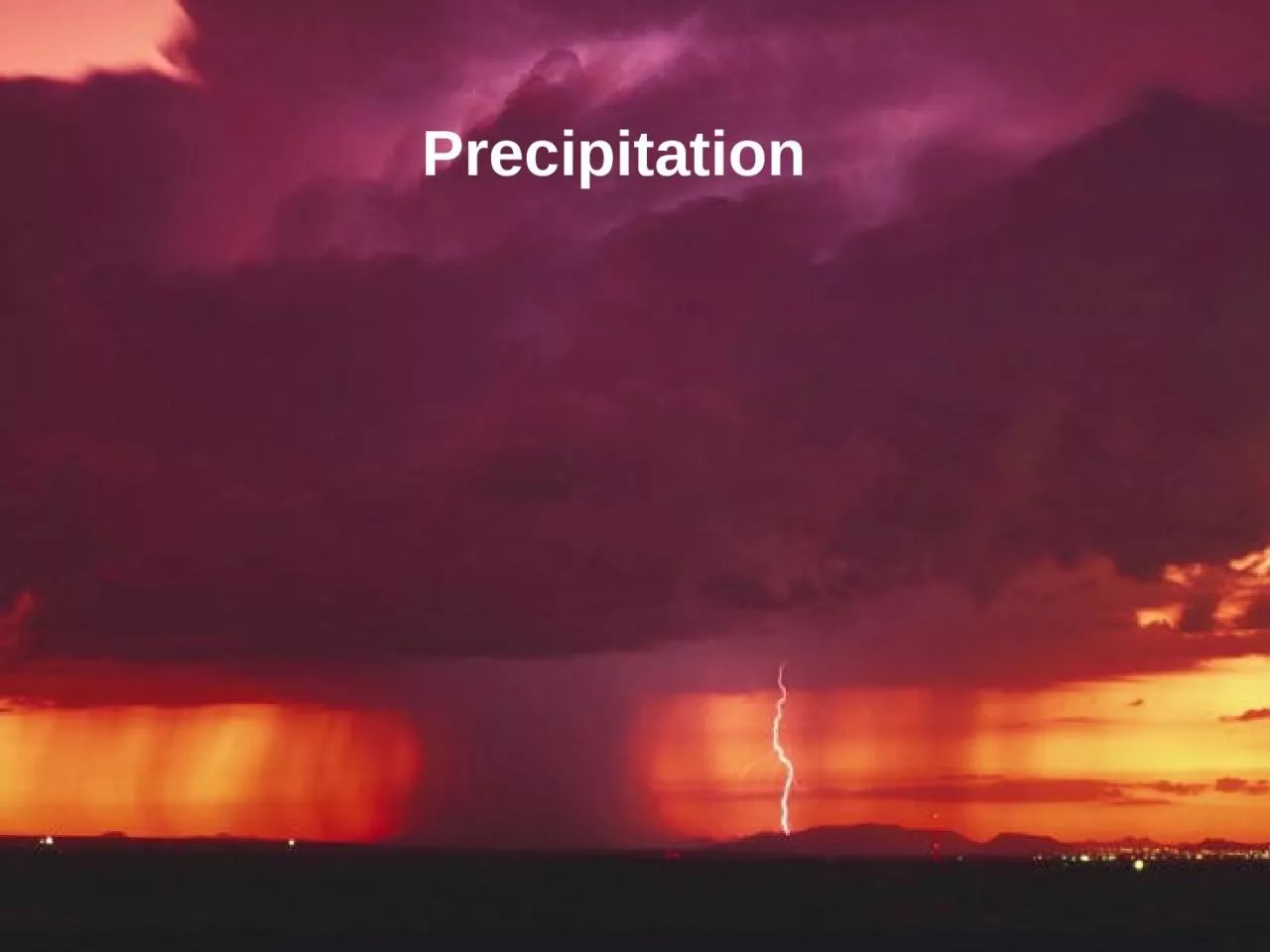

crystals Is is simply a matter of the water droplets combining to form raindrops Answer No Cloud droplets are TINY It would take thousands of them happening to combine to form a single raindrop ID: 1024864
Download Presentation The PPT/PDF document "Precipitation So far we’ve seen how ai..." is the property of its rightful owner. Permission is granted to download and print the materials on this web site for personal, non-commercial use only, and to display it on your personal computer provided you do not modify the materials and that you retain all copyright notices contained in the materials. By downloading content from our website, you accept the terms of this agreement.
1. Precipitation
2. So far we’ve seen how air gets saturated with water vapor, causing some to condense into droplets or sublimate into ice crystals.Is is simply a matter of the water droplets combining to form raindrops?
3. Answer: No, Cloud droplets are TINY! It would take thousands of them happening to combine to form a single raindrop.But clouds are filled with millions of droplets. Couldn’t they combine a few at at time to form large droplets, then raindrops?
4. That process is called collision and coalescence. Here’s how it might work:Here’s a typical cloud. Let’s look inside, just in the section in the black box.
5. Enlarged many times, there are small cloud droplets and some larger ones.The larger droplets fall faster then the lighter, small droplets. So the large droplet collides and coalesces with the small ones under it.
6. Looking at several slices at successive times, the large cloud droplet grows by colliding and coalescing (acquiring) the smaller droplets. Eventually, it grows large enough to be a raindrop.
7. The problem with this process is that clouds in the U.S. don’t have enough small droplets. Each one must form around a “condensation nucleus”, usually a bit of dust. Studies show it takes far too long to form rain this way (about 20 hours), EXCEPT in the tropics. That’s where collision and coalescence works well.
8. So, how does precipitation in mid-latitude places like the U.S. form?As Snowflakes!
9.
10. Let’s look at another slice, this one in a cold cloud. Somewhere up there, the temperature falls below 32°F (remember temperature falls with height)
11. In this slice, water droplets have formed but ice crystals (snowflakes!) also form because it’s cold. There’s always water vapor molecules so in this slice you have all 3 phases of water.
12. The water vapor molecules can condense into the water droplets and also evaporate from them. But they can only sublimate onto the ice crystals.So, the ice crystals can only grow larger! Eventually they fall. This is known as the Bergeron-Findeisen process. Amazingly, this one is fast enough to produce precipitation in minutes, just what we observe in nature.Early timeA few minutes laterAfter 10-20 minutes
13. It turns out ALL the precipitation we experience in mid-latitudes starts as snow. After it falls, the lapse rate determines what happens.
14.
15. In a freezing rain situation (called an “ice storm”), the ice covers everything.
16. You must know six basic weather symbols. Most of these (but not all) are for precipitation. We call it “present weather”. It means anything falling out of the sky or hanging in the air.http://www.youtube.com/watch?v=qJt4nV6hM1Y (thundersnow)
17. Bottom line: All clouds and precipitation form due to upward vertical motion in a humid atmosphere. How do we get upward vertical motion? We need to look at what makes the air move upward.